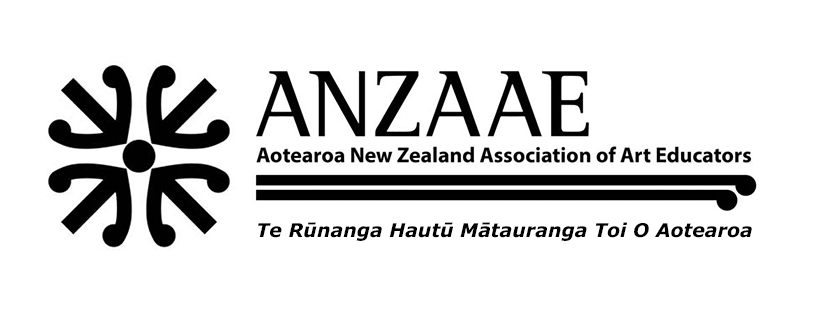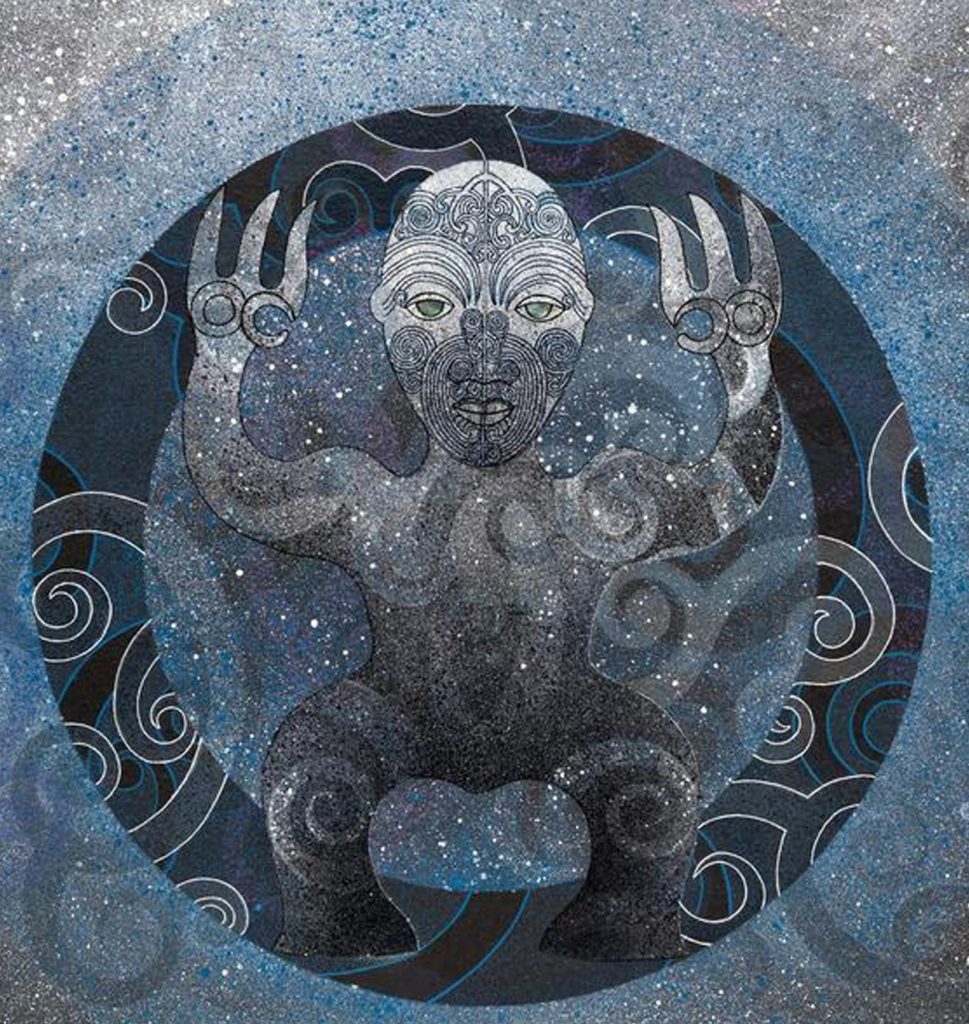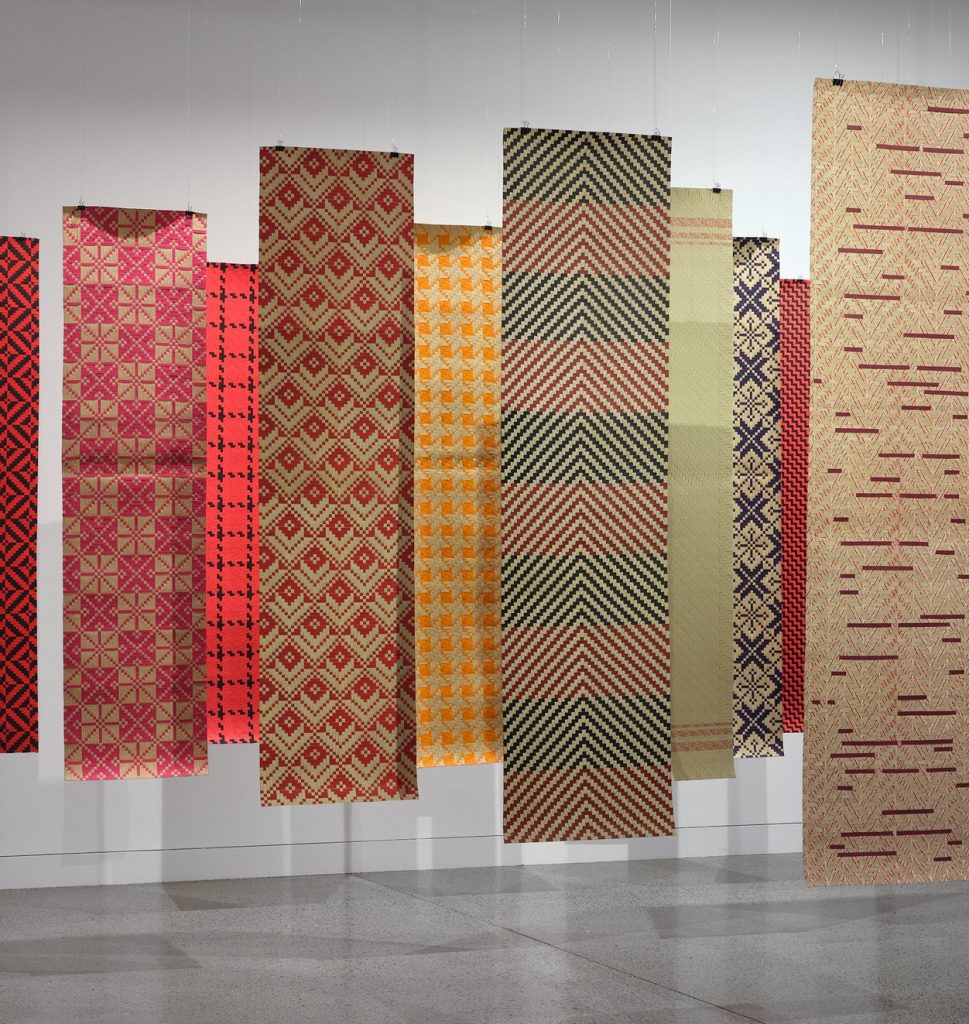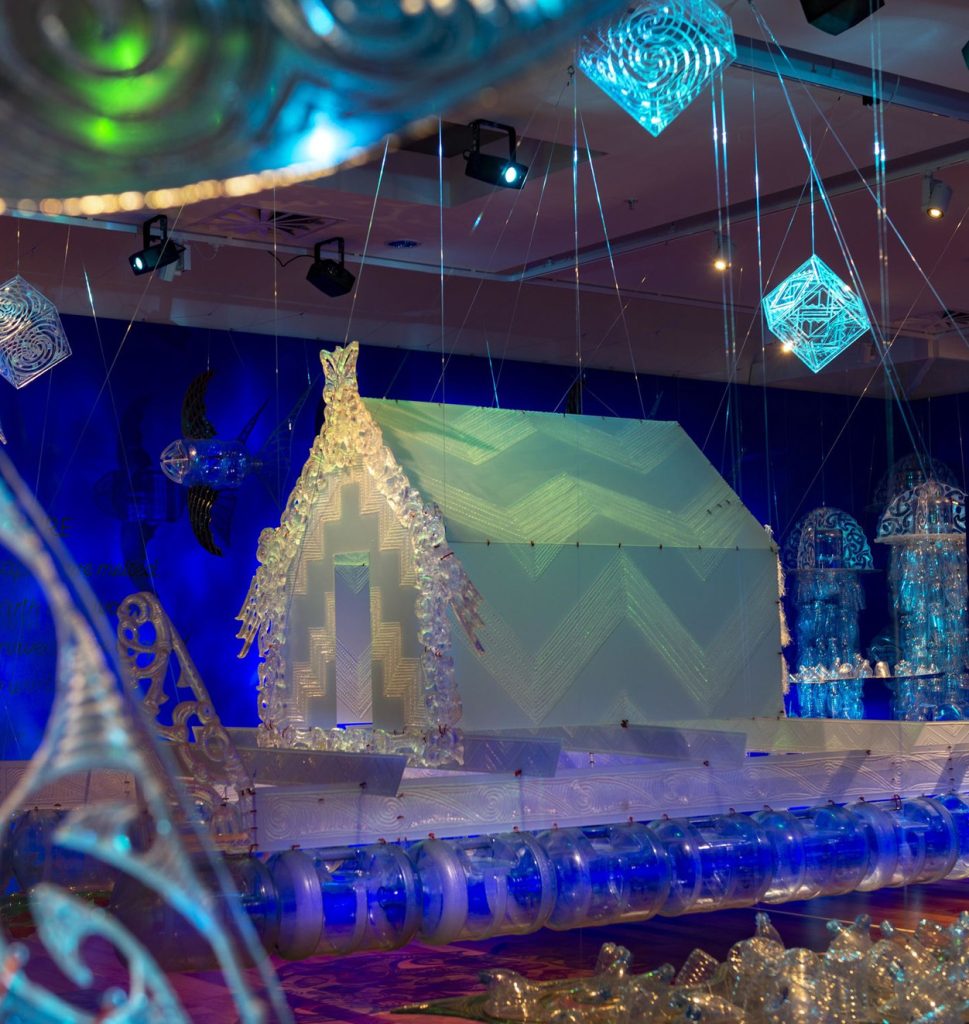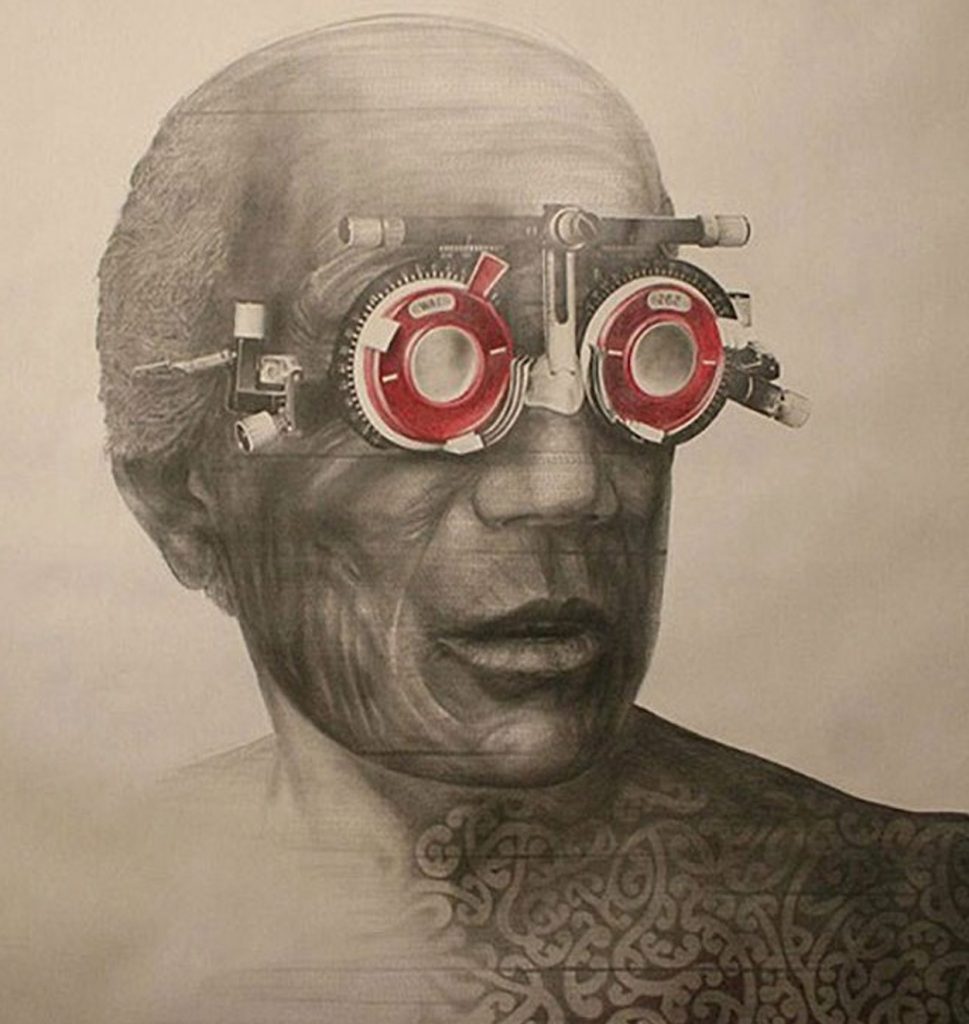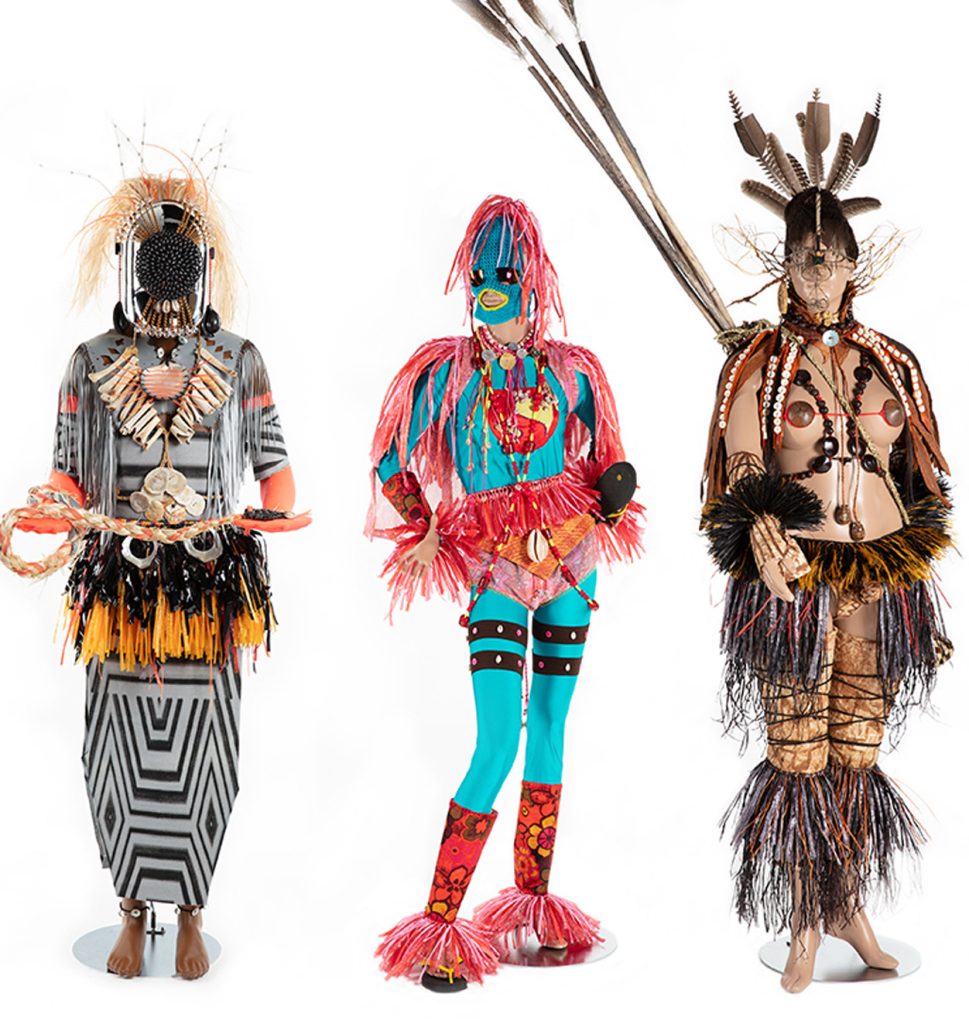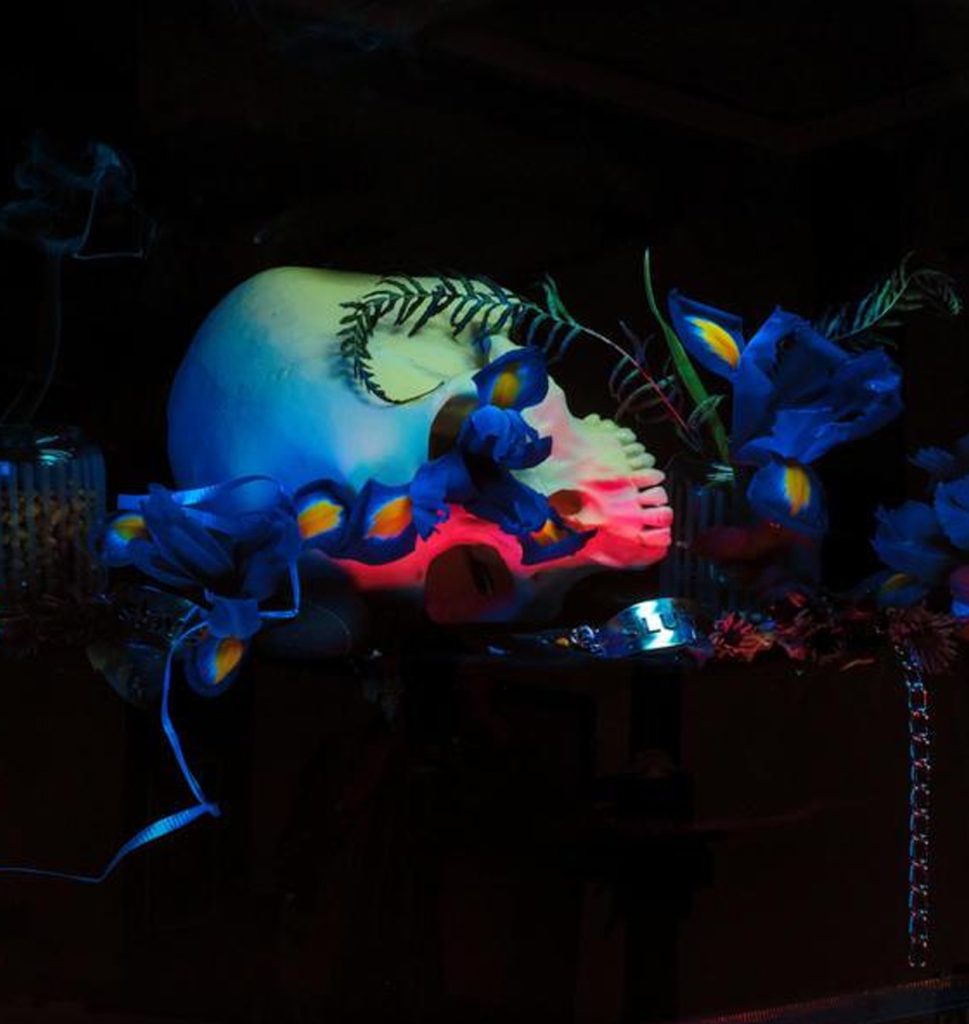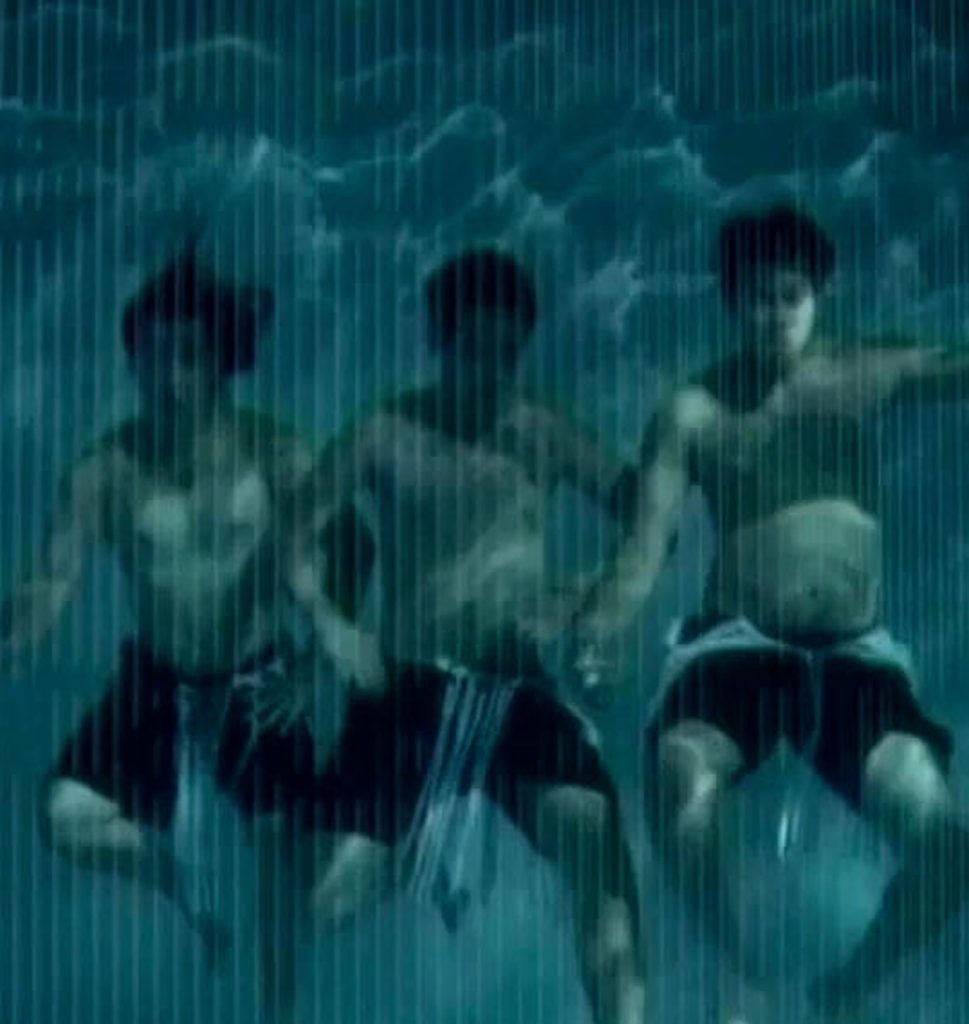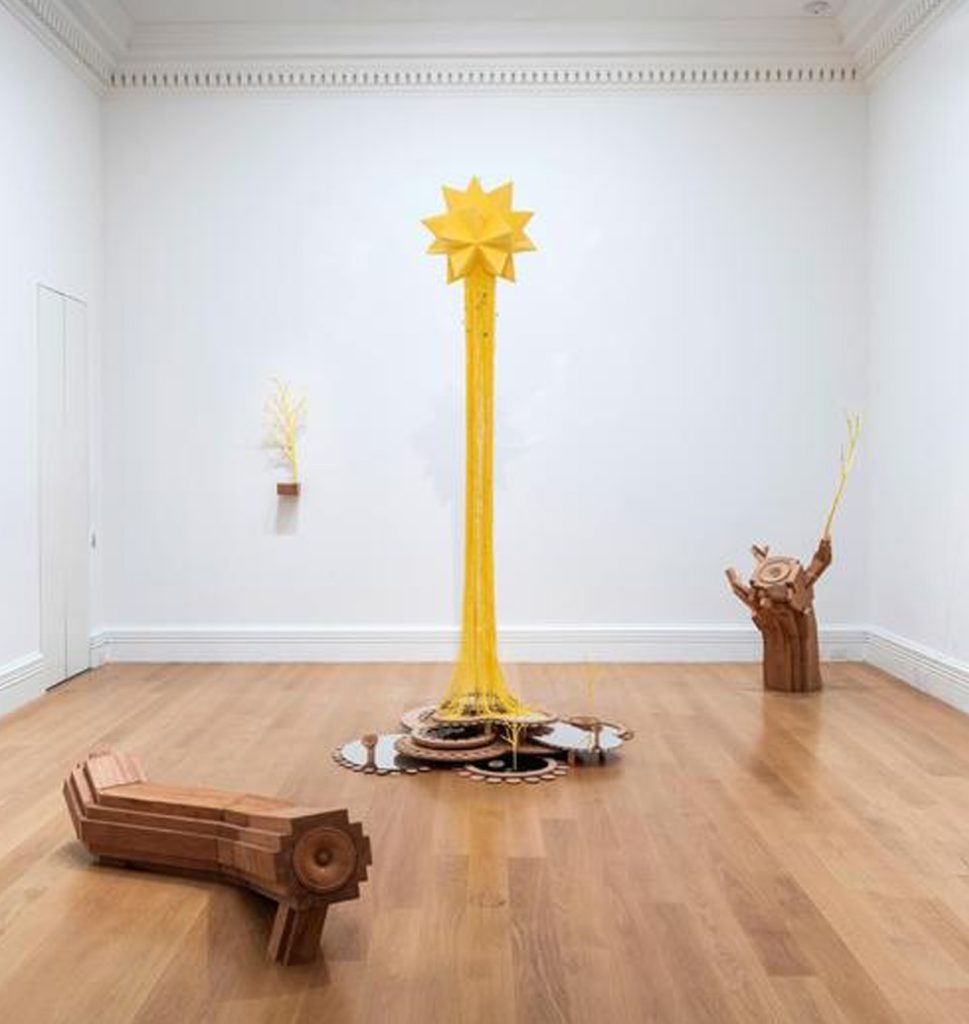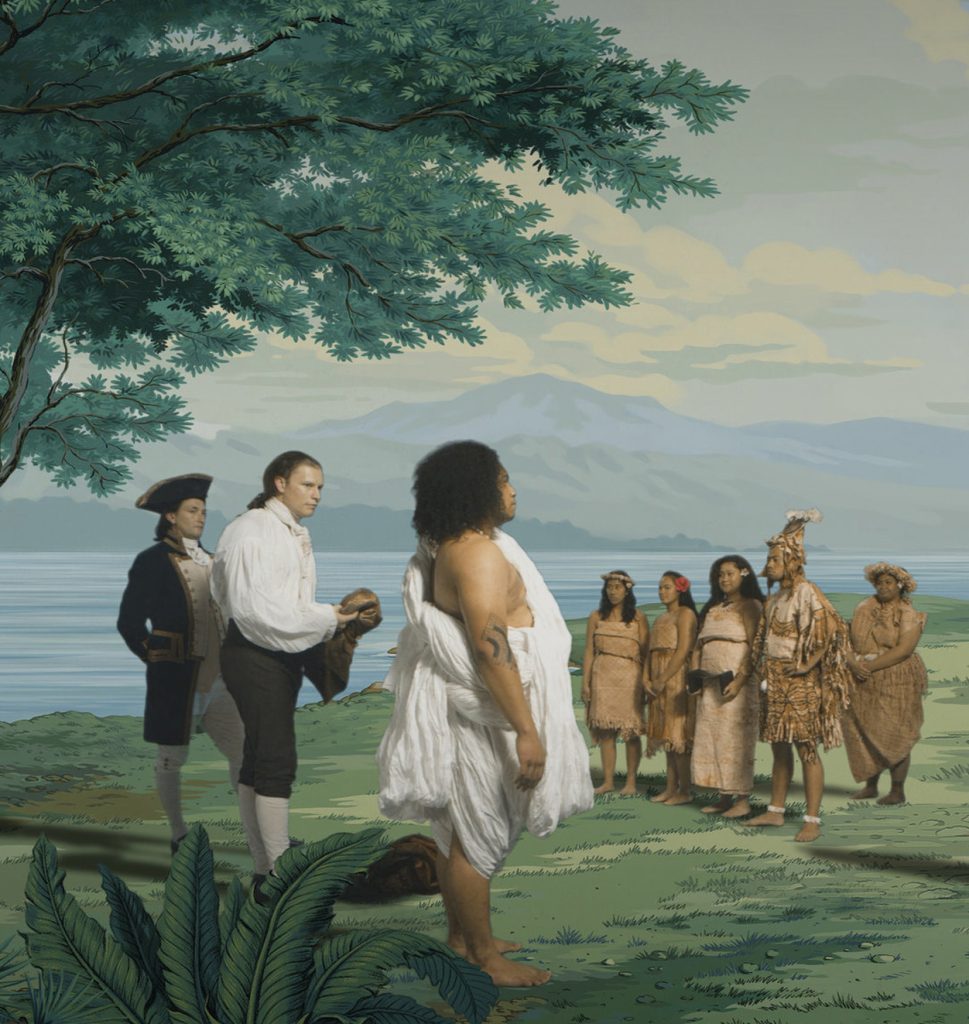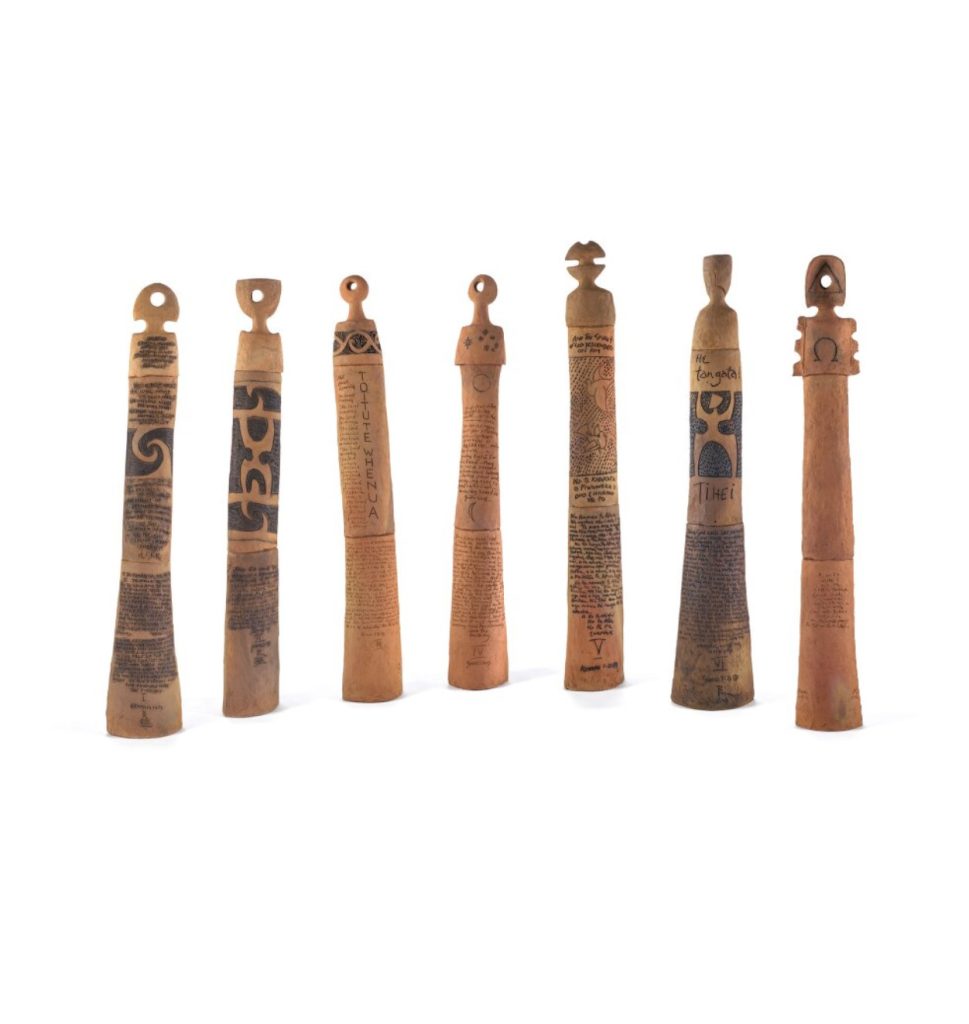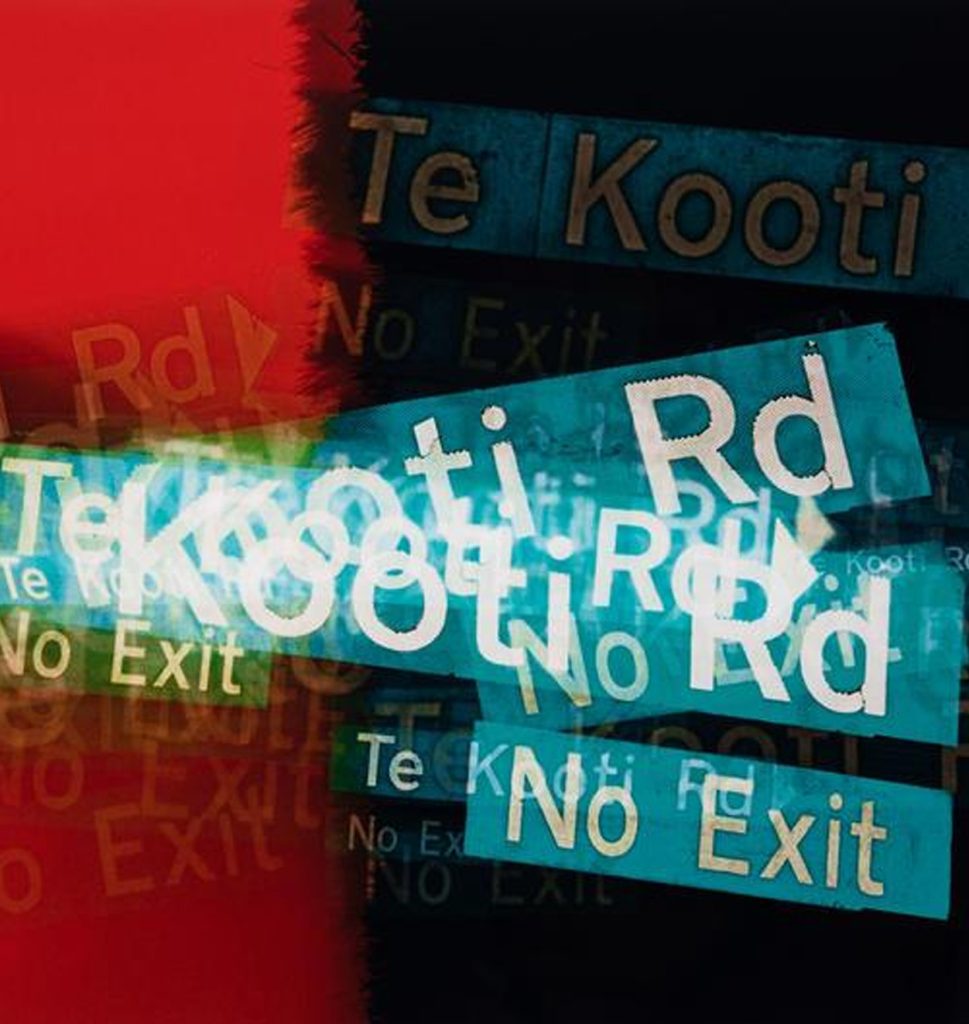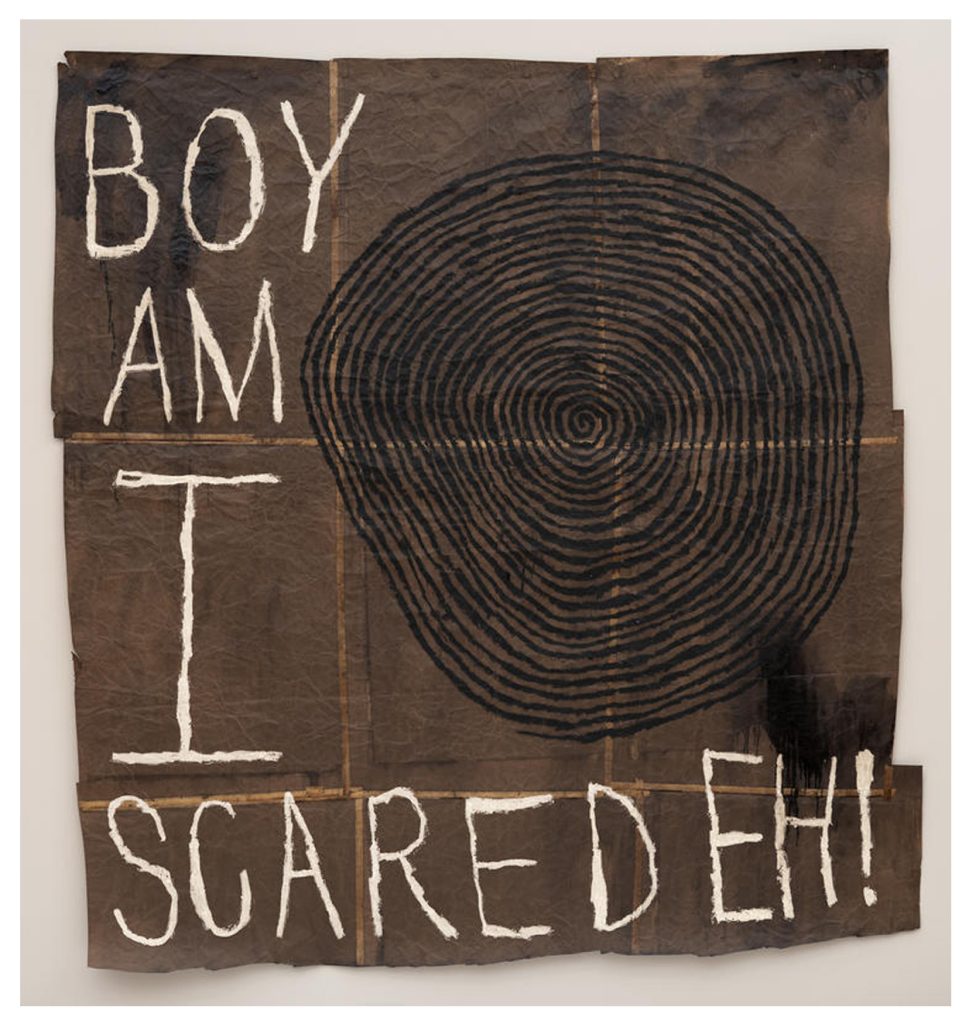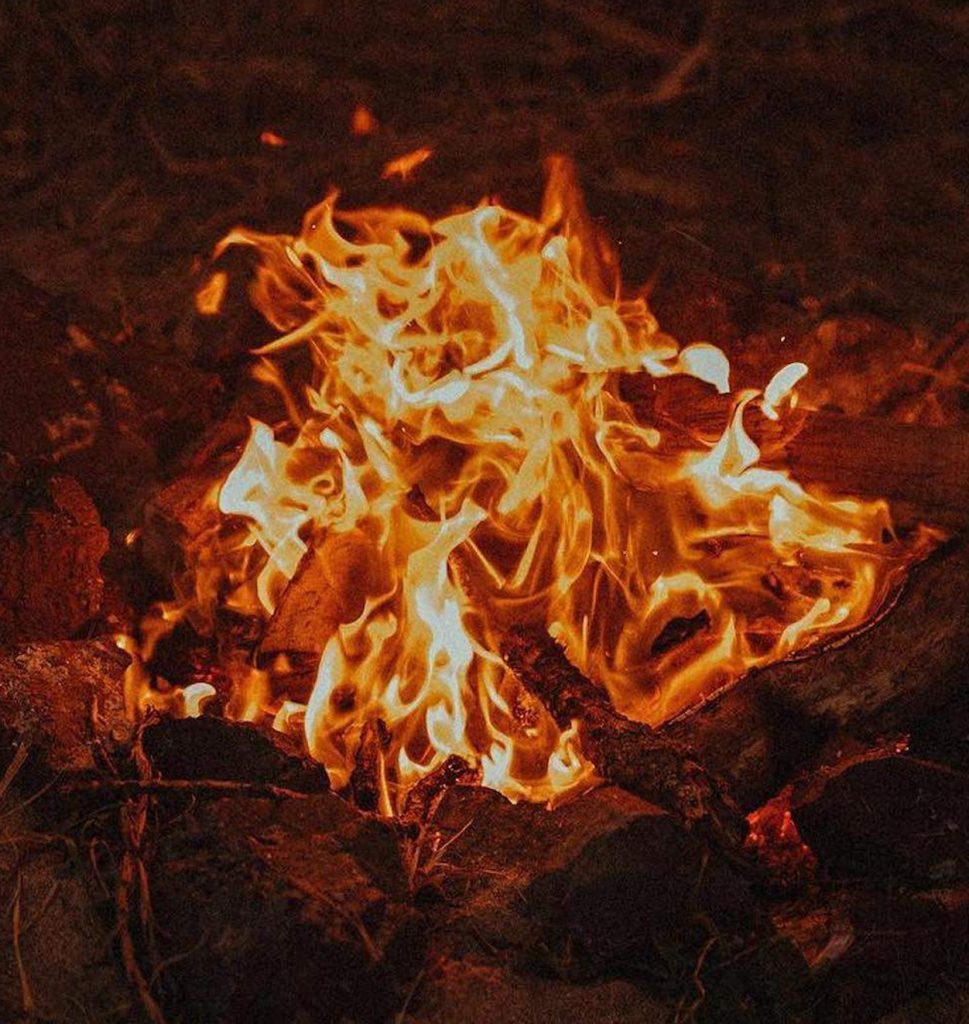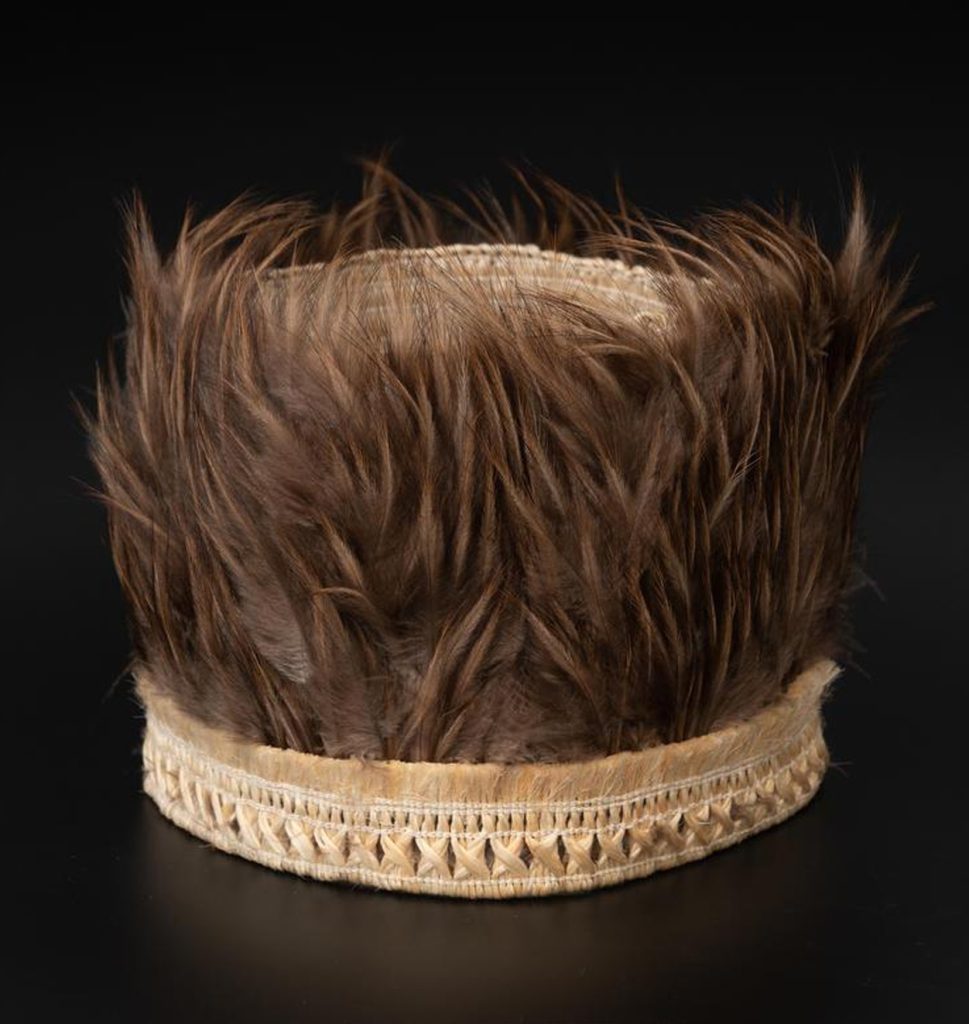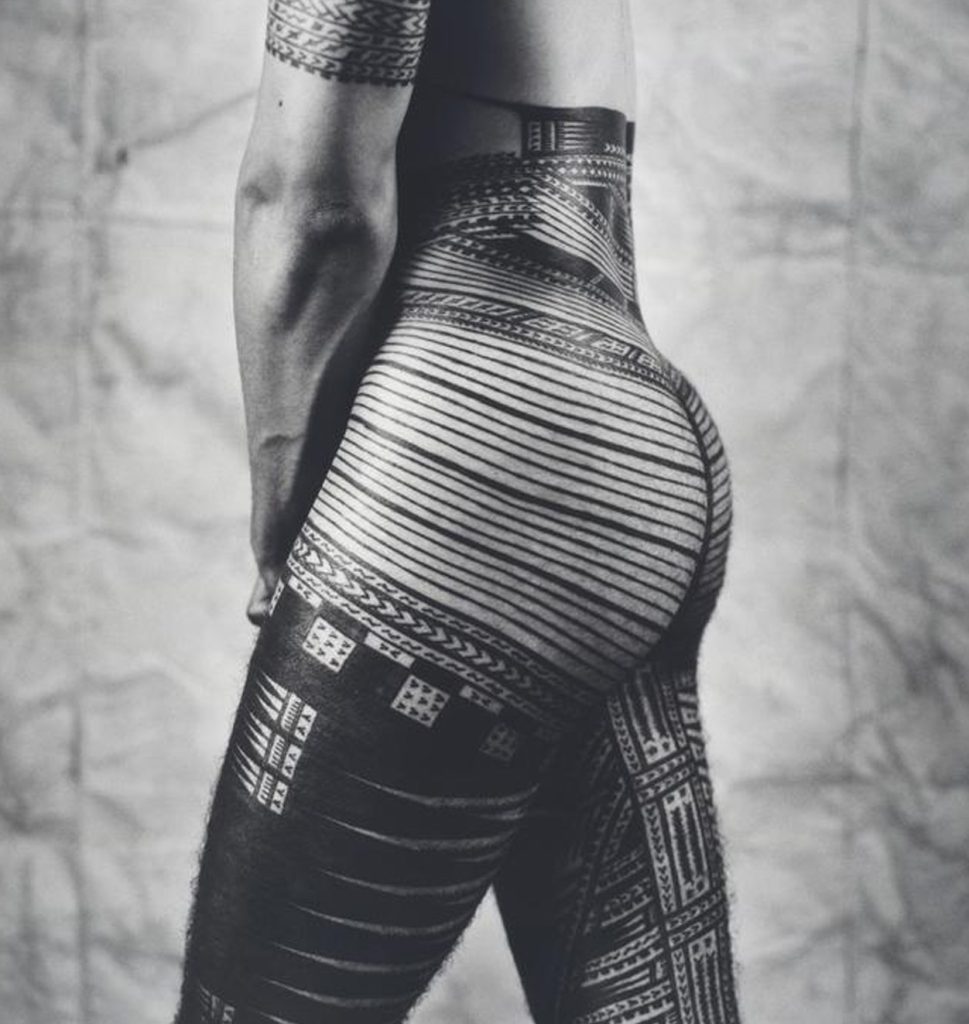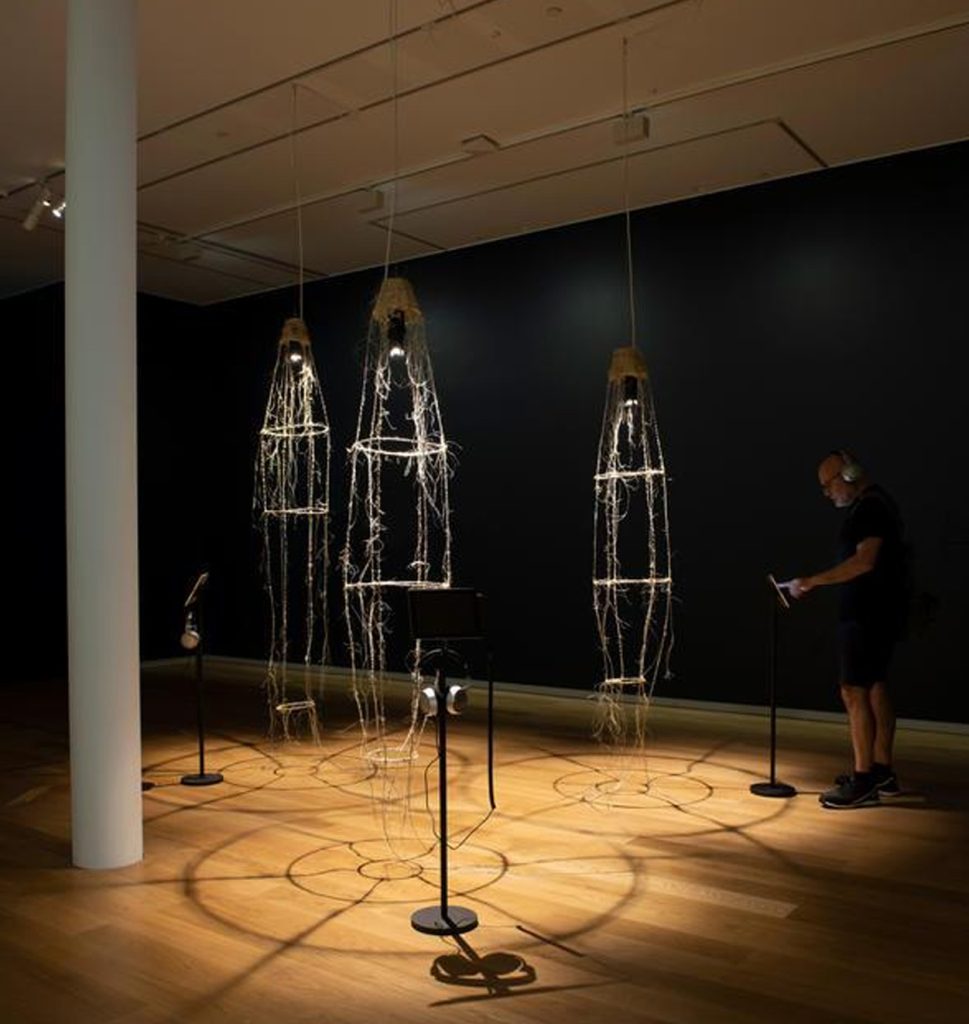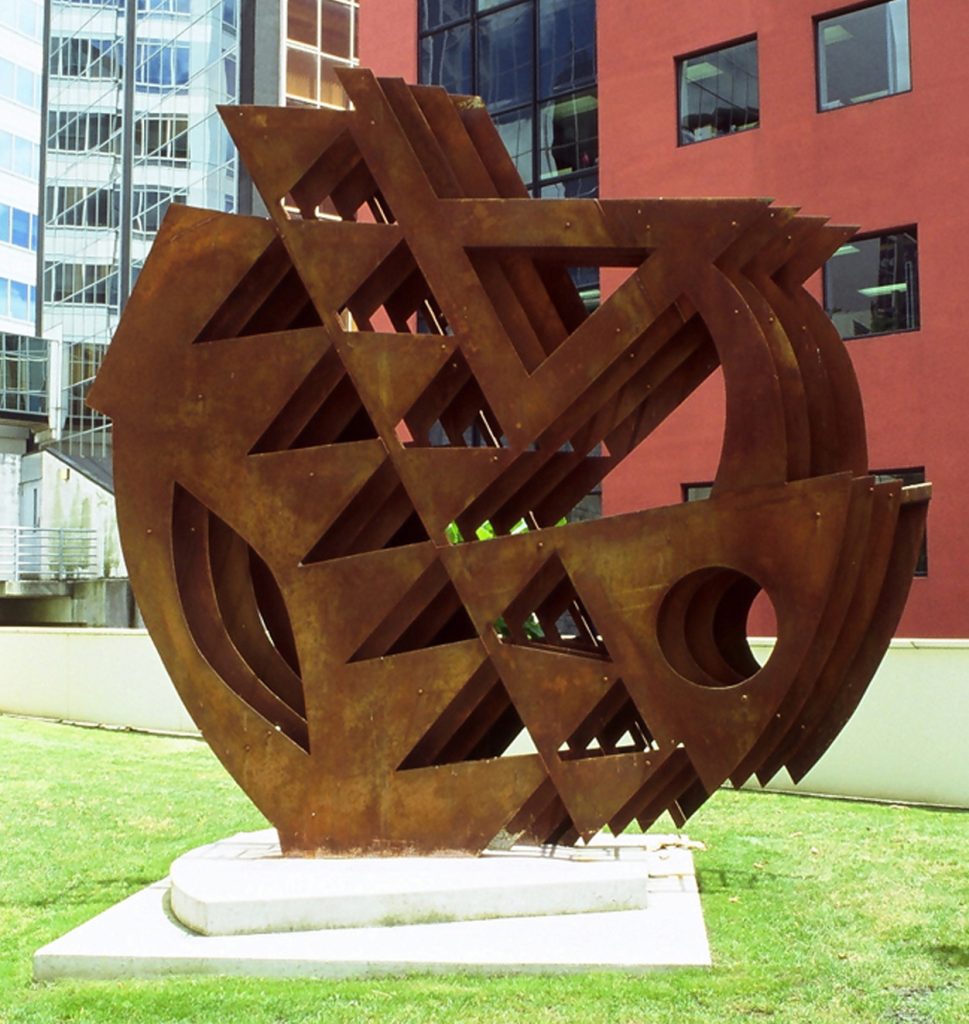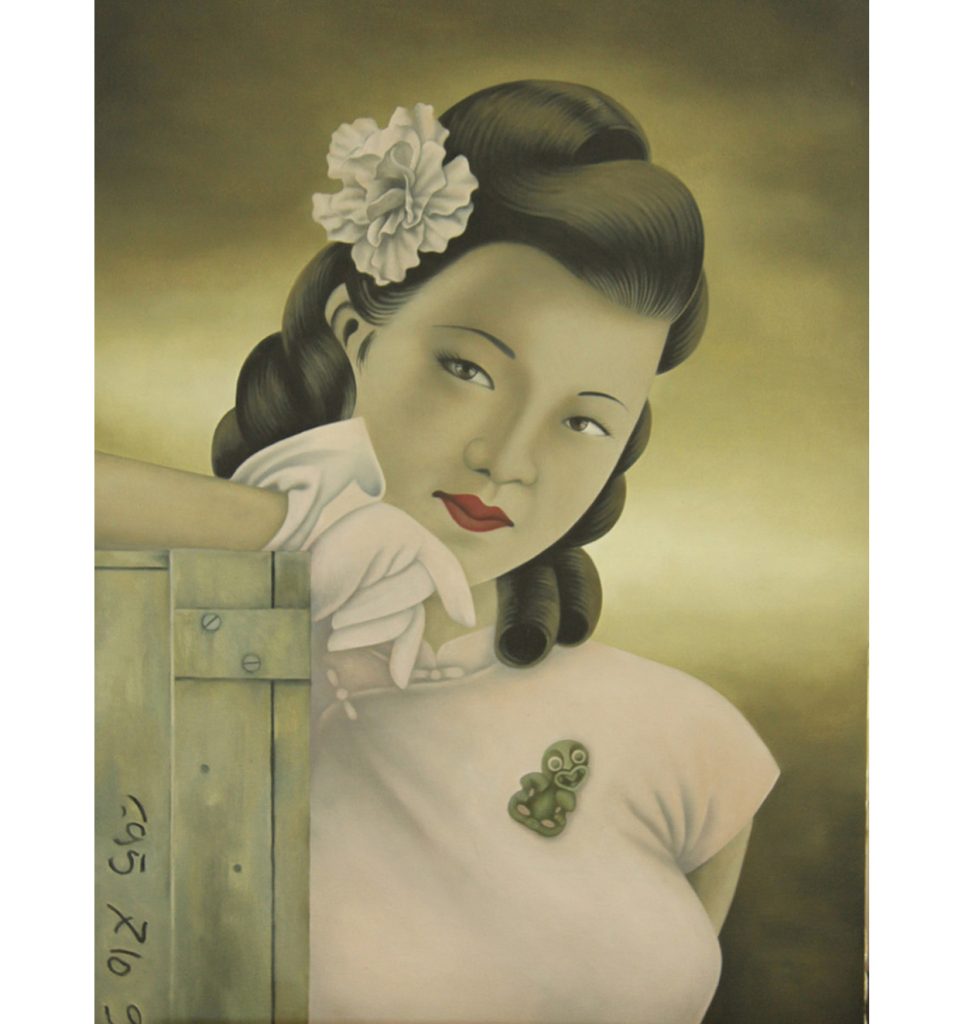Aotearoa Artists N – S
MANOS NATHAN (B. 1948)
Iwi: Te Roroa, Ngāti Whātua, Ngāpuhi
Auckland Art Gallery, Toi o Tāmaki
Massey University, College of Creative Arts, Toi Rauwhārangi
Te Papa Tongarewa
Manos Nathan was a prominent New Zealand clay artist whose work is known for its meticulous construction and unique blend of Māori and Greek cultural influences. Manos began his artistic career in wood carving and sculpture, but eventually turned to clay due to the lack of a tradition of Māori ceramic art.
Manos’ work is highly regarded for its technical skill and aesthetic beauty. Many of his recent pieces incorporate elements of his mother’s Greek heritage, as well as his father’s Māori culture, resulting in a fusion of styles that is both visually striking and culturally significant.
ALEXIS NEAL (B. 1974)
Iwi: Ngāti Awa/Te Ātiawa
Solander Gallery
The Art Paper
Object Space
Alexis Neal’ s art practice focuses on issues of cultural identity, particularly within the context of Tikanga Māori traditions. She works primarily in the medium of print, but also incorporates weaving and installation into her studio practice. Neal’s work explores the duality of artefacts as both personal adornment and material culture, and she often references the weaves of Raranga Whakairo in her layered and patterned prints.
Neal has exhibited extensively in New Zealand and internationally, and her work has been praised for its innovative approach to traditional Māori art forms. In recent years, Neal has begun to study Māori weaving and has incorporated this interest into her print work, pushing the medium into three dimensions and creating complex, woven pieces.
BUCK NIN (1942–1996)
Iwi: Ngāti Raukawa (Horowhenua/Manawatū), Ngāti Raukawa, Ngāti Toa
Auckland Art Gallery, Toi o Tāmaki
Christchurch Art Gallery, Te Puna o Waiwhetū
Buck Nin was a New Zealand painter known for incorporating traditional Māori motifs taken from Māori carving, weaving, and rafter patterns, which he adapted and reinterpreted in his own unique style.
Nin’s best-known works featured large, lattice-like structures that were embedded in the landscape. These structures were often symbolic of spiritual presences in the environment and served to evoke a sense of the sacred in the natural world. Through his use of traditional Maori motifs and his incorporation of spiritual themes, Nin’s work explored the intersection of culture and spirituality, and helped to promote a deeper understanding and appreciation of Māori art and culture.
GEORGE NUKU (B. 1964)
Iwi: Ngati Kahungunu, Ngati Tuwharetoa, German, Scottish
George Nuku’s work spans from intricately carved amulets crafted with natural materials to monumental installations constructed using modern-day plastics and polystyrene. Nuku’s installations serve as bridges, forging connections between his own artwork and ethnographic collections, as well as reflecting the existing links between the natural and cultural realms.
His exhibitions are often site-specific and inclusive, brought to life on-site with the assistance of local volunteers, demanding a remarkable level of adaptability from the host museum. These exhibitions are imbued with a spirit of collaboration, innovation, and exchange. While Nuku’s objects may appear unfamiliar through the lens of Eurocentric perspectives, the active involvement of local communities in the creative process fosters a deep sense of intimacy and connection to the project.
JAMES ORMSBY (B. 1957)
Iwi: Ngāti Maniapoto, Tainui Waikato, Te Arawa, Scottish
Auckland Art Gallery, Toi o Tāmaki
Whitespace
James Ormsby is an artist known for his large-scale, highly detailed graphite drawings that map out his unique indigenous cartographies. These drawings are characterized by a distinctive vocabulary of personal symbols, motifs, and materials, which Ormsby uses to express his whakapapa, or genealogy.
Ormsby’s drawings are inspired by ancestral Māori and Scottish mark-making and symbols, which he uses to explore the significance of symbols in communicating and connecting histories and genealogies. His works are a testament to the importance of cultural heritage and identity, and they serve as a powerful expression of his own connection to his roots.
RONA NGAHUIA OSBORNE (B. 1974)
Iwi: Ngāi Tahu Kai Tahu, Clan Fyfe Clan MacDuff Scottish, Clan Caduggan Irish
Auckland Art Gallery, Toi o Tāmaki
Corban Estate Arts Centre
Rona Ngahuia Osborne is a multidisciplinary artist who works across a variety of media, including textiles, painting, photography, and audiovisual installation. Her work often references cultural and historical narratives, incorporating images of objects associated with early Māori-Pākehā trade, such as muskets, hei tiki (human figures), cloaks, feathers, and other materials.
In addition to these historical references, Osborne’s work is also inspired by the natural environment, with imagery drawn from mountains, birds, plants, and other elements of the landscape. By blending these different elements together, Osborne creates works that are both deeply rooted in Māori culture and history, while also exploring broader themes of identity, culture, and the relationships between different cultures.
ANI O’NEILL (B. 1971)
Iwi: Ngati Makea, Ngati Te Tika
Melanie Roger
Auckland Art Gallery Toi o Tāmaki
Ani O’Neill is a site specific, installation and performance based artist of Rarotongan and Irish descent. Her work employs craft-based practices that draw on traditional Rarotonga handicraft skills to investigate a number of issues including, post-colonialism, institutional hierarchies, the environment and consumerism. She often works collaboratively, fostering a sense of community as a means to uphold Polynesian values.
PACIFIC SISTERS (EST. 1992)
The Pacific Sisters are a collective of Pasifika and Māori artists, whose work traverses fashion, performance, music, art and jewellery. Lisa Reihana, Rosanna Raymond, Ani O’Neill, Suzanne Tamaki, Selina Haami, Niwhai Tupaea, Henry Ah-Foo Taripo, Feeonaa Wall, and Jaunnie ‘Ilolahia have used style and performance to bring urban Pasifika culture to the mainstream since the 1990s.
ROWAN PANTHER
Sāmoan, English, Irish
Rowan Panther is a New Zealand textile artist of Irish, English and Sāmoan heritage. Working primarily with lace, Panther’s practice explores the space between art and artifact to create hybrid pieces that reflect her diverse cultural ancestry.
FIONA PARDINGTON (B. 1961)
Iwi: Ngāi Tahu Kai Tahu, Kāti Māmoe, Ngāti Kahungunu,
Clan Cameron of Erracht Scottish
Auckland Art Gallery, Toi o Tāmaki
Christchurch Art Gallery
Fiona Pardington is a New Zealand photographer of both Māori and Scottish heritage. Her work is known for its inventive formats, unpredictable techniques, and wide range of thematic exploration. Pardington first gained national recognition in the late 1980s with her silver gelatin prints, which explored themes of the body, the female gaze, sexuality, and implied violence, often featuring elaborate frames or mounts covered with dense and ornate collaged text.
Throughout her work, Pardington has remained deeply committed to exploring her own cultural heritage and identity. Her photography often incorporates elements of Māori culture and history, including traditional objects and artifacts, as well as images of her own family and ancestors.
MICHAEL PAREKŌWHAI (B. 1968)
Iwi: Ngāti Whakarongo
Auckland Art Gallery, Toi o Tāmaki
Michael Lett
Michael Parekōwhai’s art practice draws upon a wide range of vernacular and collective vocabularies in his work. He transforms these lexicons into complex narrative structures and formal languages, exploring themes such as perceptions of space, the ambiguities of identity, the shifting sensitivities of historical memory, and the fluid relationship between art and craft. In addition to these themes, Parekōwhai’s work also incorporates ideas of camaraderie, tools of teaching and childhood learning, as well as quotes from modern art history and popular culture.
One of the defining features of Parekōwhai’s work is its ability to engage viewers on multiple levels. While his work often emphasizes the extraordinariness of the ordinary, each body of work contains layers of potential for meaning and significance, open to any depth of interpretation and storytelling. Whether exploring the complexities of cultural identity or the intricacies of artistic practice, Parekōwhai’s work invites viewers to engage with his ideas and narratives in a thoughtful and nuanced way.
REUBEN PATERSON (B. 1973)
Iwi: Ngāti Rangitihi, Ngāi Tūhoe, Tūhourangi
Auckland Art Gallery, Toi o Tāmaki
Gow Langsford Gallery
Page Gallery
Reuben Paterson is a New Zealand artist who is best known for his use of glitter in his paintings and sculptures. His work often explores his own whakapapa, or genealogy, as well as broader themes related to identity, culture, and the natural world.
Paterson’s use of glitter is a defining feature of his work. He first began experimenting with the material in the late 1990s, and by 2000 he had painted The Wharenui that Dad Built, a seminal work that marked the beginning of his exploration of his own whakapapa in glitter. Over the next three decades, he refined his technique, creating works that feature a wide range of subjects, from animals and botanical blooms to retro patterns and fireworks.
NOVA PAUL (B. 1973)
Iwi: Te Uriroroi Ngāpuhi, Te Parawhau Ngāpuhi,
Te Māhurehure ki Whatitiri Ngāpuhi, Ngāpuhi
Auckland Art Gallery, Toi o Tāmaki
City Gallery Wellington
Nova Paul is a New Zealand filmmaker, writer, lecturer, and indigenous rights researcher who is currently based in Tāmaki Makaurau/Auckland. With a creative practice that spans over two decades, Paul has developed a distinctive voice in experimental film, exploring the history and potential of the medium of 16mm film.
Throughout her career, Paul has been interested in exploring the intersections of history, culture, and identity in her work. She has drawn on her own indigenous Māori heritage, as well as her experiences as a woman and a member of the LGBTQ+ community, to create films that challenge dominant narratives and offer new perspectives on the world.
MATT PINE (1941–2021)
Iwi: Te Āti Haunui-a-Pāpārangi, Ngāti Tūwharetoa, Te Āti Awa
Auckland Art Gallery, Toi o Tāmaki
Christchurch Art Gallery, Te Puna o Waiwhetū
Museum of New Zealand, Te Papa Tongarewa
Matt Pine was a New Zealand sculptor whose idiosyncratic practice is heavily influenced by the physical structures, construction techniques, and sculptural grammar of Māori and Pacific design. Pine’s work often combines these traditional design elements with modern materials and techniques, creating sculptures that are at once contemporary and deeply rooted in the history and culture of the Pacific.
One of Pine’s ongoing projects is a series of personal laments and memorials for his whanaunga (relatives) who were killed during World War II. These sculptures, which often incorporate found objects and materials, are a powerful tribute to the sacrifices made by his family members and serve as a reminder of the ongoing toll of war and conflict on individuals and communities.
RACHAEL RAKENA (B. 1969)
Iwi: Ngāti Tahu, Nāi Tahu, Ngāpuhi
Auckland Art Gallery, Toi o Tāmaki
Scape Public Art
Rachael Rakena’s collaborative art practices often involve working with Māori cultural narratives and histories, exploring issues such as cultural identity, colonization, and the impact of globalization on indigenous cultures. She often uses a range of media, including video, photography, and sound, to create immersive installations that incorporate elements of performance and ritual. Her works have been exhibited extensively both nationally and internationally, and she has been the recipient of numerous awards and residencies for her contributions to the field of contemporary art.
SAFFRONN TE RATANA (B. 1975)
Iwi: Ngāi Tūhoe
Auckland Art Gallery, Toi o Tāmaki
Mutual Art
Saffronn Te Ratana’s works often challenge traditional concepts of painting by incorporating text, layering, and sculptural elements. Her pieces often explore Māori themes, including cultural identity and historical narratives, while also pushing the boundaries of the medium itself.
LISA REIHANA (B. 1964)
Iwi: Ngāti Hine, Ngāpuhi, Ngāti Tu
Auckland Art Gallery, Toi o Tāmaki
Artist Website
Reihana translates traditional indigenous concepts and narratives from an urban Māori perspective, examining issues of colonialism, gender, language and place. Working across a range of media – including film, sculpture, costume and body adornment, and photography – her art offers a dramatic and dynamic commentary on Māori history and identity. Her work harness and manipulate seductively high production values is often expressed through portraiture where she explores how identity and history are represented, and the intersection of these ideas with concepts of place and community.
BRIDGET REWETI (B. 1985)
Iwi: Ngāti Ranginui, Ngāi Te Rangi
Auckland Art Gallery, Toi o Tāmaki
Artist Website
Circut
Bridget Reweti works primarily with photography and other lens-based mediums to explore Māori landscape narratives and perspectives. Her practice involves a close examination of personal, natural, cultural, and historical knowledge associated with specific sites.
Through her work, Reweti aims to uncover hidden narratives and reveal the complex layers of history and meaning that exist within the landscape. Her exploration of people and place is rooted in Māori culture and often focuses on the relationships between land, community, and identity.

BAYE RIDDELL (B. 1950)
Iwi: Ngāti Porou, Te Whānau-a-Ruataupare, Ngāti Porou
Auckland Art Gallery, Toi o Tāmaki
Baye Riddell started his journey with clay in Christchurch in 1974, and since 1979, he has been residing and working in his tribal area on the East Coast, Tokomaru Bay and Gisborne. Riddell’s preference is to work with locally sourced clay, which he digs from his family land. He believes that using clay from his ancestral land fosters a sense of respect and connection with his ancestors.
Riddell employs both wheel and hand-building techniques to create his pieces. His artwork is a reflection of his connection to his culture and the land, and he has gained recognition for his unique and intricate designs that are heavily influenced by traditional Māori art.
NATALIE ROBERTSON (B. 1962)
Iwi: Ngāti Porou, Clann Dhònnchaidh/Scotland
Auckland Art Gallery, Toi o Tāmaki
AUT
Natalie Robertson is an artist who uses photography and moving image as her mediums to investigate Māori knowledge practices and promote the importance of ecologies and cultural landscapes. Her works involve archival research and oral histories to reconnect narratives to their geographical markers. By doing so, she highlights the importance of land as a repository of ancestral memory and acknowledges its vital role in shaping cultural identities.
Robertson’s art explores the intersection of culture, history, and environment, and how these aspects are interlinked. Her work encourages a deeper understanding of the importance of indigenous knowledge and the connections between people and the land they inhabit.
PETER ROBINSON (B. 1966)
Iwi: Ngāi Tahu, Kāi Tahu
Auckland Art Gallery, Toi o Tāmaki
Peter Robinson is a significant figure in the second generation of Māori artists who emerged from the School of Fine Arts (Ilam) at the University of Canterbury, Christchurch, New Zealand, in the late 1980s. Born in Ashburton, Canterbury, in 1966, Robinson currently resides and works in Auckland, New Zealand.
Renowned for his provocative and controversial approach to addressing issues such as race relations, Robinson’s work is well-known in New Zealand. His artistic practice has been marked by elements of shock and surprise, and he has consistently experimented with various materials, techniques, and themes throughout his career.
HŌHUA ROPATE KURENE (B. 1996)
Iwi: Kai Tahu, Sāmoan, Afro-European
Hōhua Ropate Kurene is a New Zealand born queer indigenous artist of Samoan, Māori and Afro-European heritage who specialises in photography, creative writing and multimedia design. Kurene’s diverse practice considers cultural heritage, sexuality and community as a vehicle for art making, it is no wonder that he is also a member of the FAFSWAG Arts Collective.
RAYMOND SAGAPOLUTELE (B. 1971)
Sāmoan
Raymond Sagapolutele
Bergman Gallery
Raymond Sagapolutele is a New Zealand visual artist of Sāmoan heritage with family ties to villages of Fatuvalu in Savai’i and Saluafata in Upolu, Samoa. Self-taught, he considers himself as an ‘artist with a camera’ and started his photography journey working for Back to Basics and Rip it Up publications. Sagapolutele uses the camera as a way to reconnect with culture by examining his place in the diaspora as a Sāmoan born in Aotearoa.
EMILY SChUSTER (1927-1997)
Iwi: Te Arawa, Ngāti Tūwharetoa
Auckland Art Gallery, Toi o Tāmaki
Te Papa Tongarewa
Te Arawa Stories
Emily Schuster was a master weaver, recognised for her key role in the revitalisation of Māori weaving traditions as well as in the conservation of materials crucial to this art form.
GREG SEMU (B. 1971)
New Zealander, Sāmoan
Greg Semu is a New Zealand photographer, independent researcher and visual artist of Sāmoan descent. He is a self-trained autodidact whose work explores issues around Pacific history, diaspora and challenging colonial narratives. Semu uses photography as a vehicle to reference and reimagine heroic European historical paintings, which he parodies accepted history with Pacific oral histories.
MAREE SHEEHAN (B. 1969)
Iwi: Ngāti Maniapoto, Ngāti Tūwharetoa, Ngāti Raukawa, Ngāti Tahu-Ngāti Whāoa
Auckland Art Gallery, Toi o Tāmaki
NZ On Screen
Dr. Maree Sheehan is a sound artist who works in Tāmaki Makaurau/Auckland. Dr. Sheehan’s original music has been featured in renowned films and television series, including Once Were Warriors, Broken English, and Shortland Street. She has since expanded her career to composing music and sound for film, dance, and theatre productions both nationally and internationally.
RICHARD SHORTLAND COOPER (B. 1962)
Iwi: Ngā Puhi, Ngāti Hine
Richard Shortland Cooper is a New Zealand sculptor of Ngā Puhi and Ngāti Hine whakapapa. He reimagines traditional Māori motifs and narratives into large scale contemporary sculptures.
HUHANA SMITH (B. 1962)
Iwi: Ngāti Tukorehe, Ngāti Raukawa ki te Tonga/Ngāti Raukawa, Te Rangitāwhia, Te Mateawa/Ngāti Whanaunga,
Ngāti Kapumanawawhiti/Ngāti Raukawa
Auckland Art Gallery, Toi o Tāmaki
Drawing Open
College of Creative Arts, Toi Rauwharangi
Huhana Smith is a visual artist, curator, and principal investigator for a research team that engages in major collaborative, transdisciplinary, kaupapa Māori, and action-research projects for Māori lands and waterways. Her artworks address the protection of the environment and Māori cultural heritage, often working with painting to explore physical, cultural, and spiritual engagement with landscapes and waterways.
HEATHER STRAKA (B. 1972)
Iwi: New Zealander
Heather Straka’s art practice involves exploring socio-political and cultural issues through painting and photography. She is known for her thought-provoking work that challenges stereotypes, traditions, and politically correct narratives. Straka’s work is often controversial and engaging, as she explores complex and nuanced issues through a combination of visual and narrative elements. Her work is considered prescient and witty, with a keen eye for observing the cultural pulse of contentious issues.
